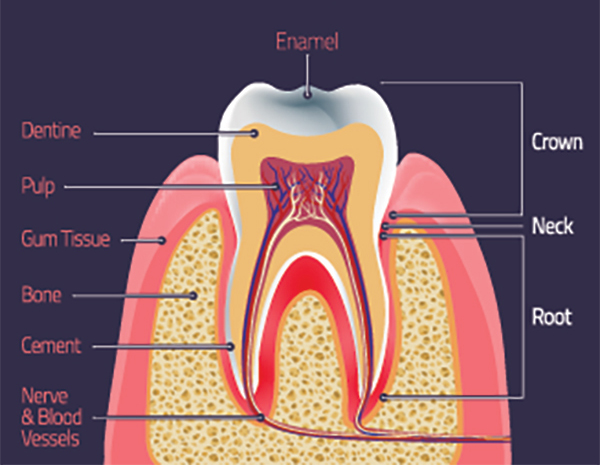Avoiding dental caries typically begins with preventing the erosion of tooth enamel. Unfortunately, unlike other tissues of the body, enamel cannot regenerate once it is lost, which can lead to pain and tooth loss. These problems affect more than 50% of the world's population, and so finding ways to recreate enamel has long been a major need in dentistry. Now, investigators at Queen Mary University of London have developed a new way to grow mineralized materials that could regenerate hard tissues such as dental enamel and bone.
Findings from the new study were published today in Nature Communications, in an article entitled “Protein Disorder-Order Interplay to Guide the Growth of Hierarchical Mineralized Structures.”
Discussing the new study, lead investigator Sherif Elsharkawy, Ph.D., a dentist, and researcher at Queen Mary's School of Engineering and Materials Science, stated that the results were “exciting because the simplicity and versatility of the mineralization platform open up opportunities to treat and regenerate dental tissues. For example, we could develop acid-resistant bandages that can infiltrate, mineralize, and shield exposed dentinal tubules of human teeth for the treatment of dentin hypersensitivity.”
![Similarity of structure between the enamel-like material and dental enamel. [Alvaro Mata/Queen Mary University of London]](https://genengnews.com/wp-content/uploads/2018/08/171810_web1726822892-1.jpg)
Similarity of structure between the enamel-like material and dental enamel. [Alvaro Mata/Queen Mary University of London]
Enamel, located on the outer part of our teeth, is the hardest tissue in the body and enables our teeth to function for a large part of our lifetime despite biting forces and exposure to acidic foods and drinks and extreme temperatures. This remarkable performance results from its highly organized structure.
This new approach could potentially create materials with remarkable precision and order that look and behave like dental enamel. Moreover, the materials could be used for a wide variety of dental complications, such as the prevention and treatment of tooth decay or tooth sensitivity—also known as dentin hypersensitivity.
The mechanism that the research team developed is based on a specific protein material that can trigger and guide the growth of apatite nanocrystals at multiple scales—similarly to how these crystals grow when dental enamel develops in our body. This structural organization is critical for the outstanding physical properties exhibited by natural dental enamel.
![Close up of the enamel-like material. [Alvaro Mata/Queen Mary University of London]](https://genengnews.com/wp-content/uploads/2018/08/171809_web1082141665-1.jpg)
Close up of the enamel-like material. [Alvaro Mata/Queen Mary University of London]
“…we report a protein-mediated mineralization process that takes advantage of disorder-order interplay using elastin-like recombinamers to program organic-inorganic interactions into hierarchically ordered mineralized structures,” the authors wrote. “The materials comprise elongated apatite nanocrystals that are aligned and organized into microscopic prisms, which grow together into spherulite-like structures hundreds of micrometers in diameter that come together to fill macroscopic areas. The structures can be grown over large uneven surfaces and native tissues as acid-resistant membranes or coatings with tunable hierarchy, stiffness, and hardness.”
Enabling control of the mineralization process opens the possibility to create materials with properties that mimic different hard tissues beyond enamel such as bone and dentin. As such, the work has the potential to be used in a variety of applications in regenerative medicine. In addition, the study also provides insights into the role of protein disorder in human physiology and pathology.
“A major goal in materials science is to learn from nature to develop useful materials based on the precise control of molecular building-blocks,” concluded senior study investigator Alvaro Mata, D. Eng., a professor at Queen Mary's School of Engineering and Materials Science. “The key discovery has been the possibility to exploit disordered proteins to control and guide the process of mineralization at multiple scales. Through this, we have developed a technique to easily grow synthetic materials that emulate such hierarchically organized architecture over large areas and with the capacity to tune their properties.”



